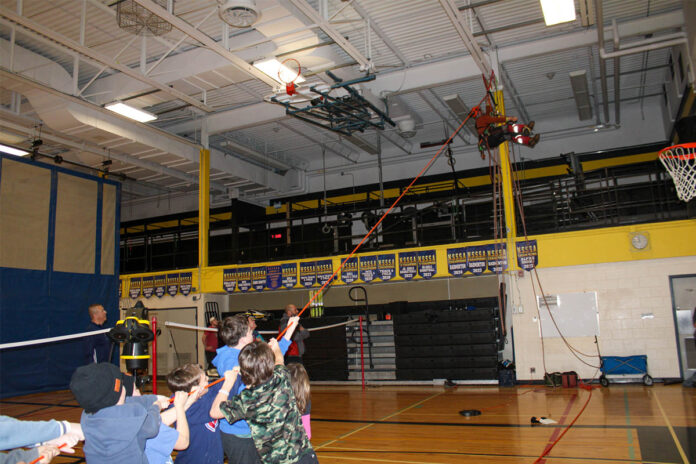I know February 14 has passed but a love letter for our natural heritage system is topical following the February 5, 2025 Manitoulin Expositor article entitled “Municipalities resist housing ministry’s plan to make landowners responsible for proving “at risk” species. That outlined a position from a mayor that could put our beautiful natural heritage system at risk. Instead of resisting the province on this issue, I would like to propose a community led solution that supports our local economy and protects the natural heritage system we all love.
Right now, all municipalities within the Manitoulin Planning Board (MPB) are being asked to vote on the draft Natural Heritage System Strategy (NHSS). Our shared natural heritage system on Manitoulin Island includes wetlands that protect our communities from flooding, alvar and oak savanna ecosystems that are globally rare and deer yards that sustain our healthy deer populations, which also feed many families in our community. Our natural heritage system is incredible, rare and supports our shared way of life. I love it and I know our community loves it.
This is why I was heartbroken to read that some mayors on Manitoulin Island are advocating for municipal representatives to resist the province’s amendment to our draft NHSS which would require property owners that live adjacent to natural heritage features to conduct a Species-At-Risk (SAR) verification and environmental impact assessment when applying for MPB amendments. One mayor stated that “we feel (property owner) rights would be taken from them” if SAR verification and environmental assessments were required when a property owner wants to make a significant change on their property and that property is adjacent to a natural heritage feature. If you are curious if your property is adjacent to a natural heritage feature – check out the MPB website: manitoulinplanning.ca.
I agree with this mayor that the draft NHSS is a rights issue, but I would respectfully submit that the responsible stewardship of natural heritage systems is a rights issue for all our relatives – trees, wetlands, mammals, insects, birds, fish, people and future generations. Individual property owners may be impacted but everyone will be impacted if we cannot protect SAR and the integrity of the ecosystem services provided by natural heritage features that maintain our way of life by implementing proper due diligence when significant changes may adversely impact our shared environment.
So, what critical ecosystem services do SAR provide in our community?
As an example, apex predators like the eastern wolf (threatened), cougar (special concern), coyotes, bobcat and lynx provide essential services in our ecosystem. Through predation of smaller mammals, the presence of apex predators’ controls Lyme disease and when these types of predators no longer exist, or populations dwindle in our natural heritage system we can expect to see increases in Lyme disease – which impacts everyone.
Speaking with farmers, landowners and citizens of our beautiful island, I am always struck by how proud Islanders are to steward lands that support SAR like the monarch butterfly (special concern), lake huron grasshopper (threatened) or piping plover (endangered). This pride is shown daily on popular Manitoulin Island Facebook groups where people often share trail camera footage of bears, beaver or the famous Kagawong piebald deer herd chilling in our backyards. Each one of these relatives offers an ecosystem service that we all rely on – from pollination in our gardens to the wildfire mitigation that is provided by hardwoods like the endangered, Black Ash. Yes – that’s right – hardwood in comparison to soft wood can reduce the speed and intensity of wildfires which could save lives in a wildfire emergency – now that is a critical ecosystem service worth protecting!
Rather than resisting the province on this matter, there is an alternative solution that will be good for people, the planet and our community. Since we have more SAR and globally rare natural heritage features on Manitoulin Island than the average Ontario community, we have a unique value proposition for organizations that want to invest in biodiversity net gain and carbon sequestration. Instead of fighting the province, we can work together to establish a Manitoulin Island stewardship fund, jointly capitalized by the province, philanthropy and the private sector that can provide financial support for property owners that must complete SAR verification, environmental impact assessments and if they choose, restoration and ecological enhancements that support co-existence with SAR. Environmental impact and SAR assessments can also be used to develop carbon, biodiversity and payment for ecosystem service projects that can generate income for property owners when best practices in land stewardship are implemented. This kind of a solution would help support our regenerative economy, reduce due diligence costs for property owners, protect our natural heritage system/way of life and improve community resilience in the face of climate change and trade wars. Win-win-win-win.
If you love our natural heritage system as much as I do – ask your municipal representative to vote in favour of the draft NHSS and let’s work together to raise the funds we need to support property owners that may incur extra costs to care for this precious place, while also generating diversified revenue streams from working lands in our community. If we take care of the land, the land will take care of us.
With love to all Manitoulin Island residents and our natural heritage system.
by Kim Neale
Kim Neale lives in Kagawong, has a degree in environmental engineering and is a practicing ecological economist that founded the Manitoulin Climate Collaborative (Mc2), authored two 10yr municipal climate change plans on Manitoulin Island, is a board member of the Escarpment Biosphere Conservancy and former executive with World Wildlife Fund Canada. Kim has also been a member of Canadian delegations to the United Nations climate change (COP29) and biodiversity (COP15) conferences and is currently co-designing bioregional investment funds that support community led regenerative economic development across Turtle Island.





